Provided
courtesy of
Walter
Burien - CAFR1.com
P. O. Box 2112
Saint Johns, AZ 85936
Tel. (928) 458-5854
P. O. Box 2112
Saint Johns, AZ 85936
Tel. (928) 458-5854
The Price of Free Corn...
based on a telling by George Gordon
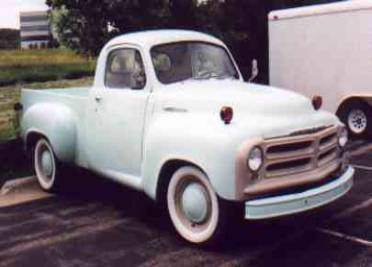
Some years ago, an old trapper from North
Dakota hitched up some horses to his Studebaker truck, packed a few possessions
and drove south.
Several weeks later he stopped in a small town just north of the Okefenokee Swamp in Georgia.
It was a Saturday morning -- a lazy day --
when he walked into the general store. Sitting around the pot-bellied stove
were seven or eight of the town's local citizens.
The traveler spoke. "Gentlemen, could you direct me to the Okefenokee
Swamp?"
Some of the old-timers looked at him like he
was crazy. "You must be a stranger in these parts," they said.
"I'm from
North Dakota," said the stranger.
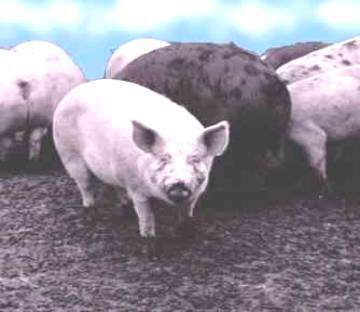 "In
the Okefenokee Swamp are thousands of wild hogs." one old man explained.
"A man who goes into the swamp by himself asks to die!" He lifted up
his leg. "I lost half my leg here, to the pigs of the swamp."
"In
the Okefenokee Swamp are thousands of wild hogs." one old man explained.
"A man who goes into the swamp by himself asks to die!" He lifted up
his leg. "I lost half my leg here, to the pigs of the swamp."
Another old fellow said, "Look at the
cuts on me; look at my arm bit off! Those pigs have been free since the
Revolution, eating snakes and roots and fending for themselves for over a
hundred years. They're wild and they're dangerous. You can't trap them. No man
dares go into the swamp by himself." Every man nodded his head in
agreement.
The old trapper said, "Thank you so much for the warning. Now could you
direct me to the swamp?"
They said, "Well, yeah, it's due south
-- straight down the road." But they begged the stranger not to go,
because they knew he'd meet a terrible fate.
He said, "Sell me ten sacks of corn, and
help me load it in the wagon." And they did. Then the old trapper bid them
farewell and drove on down the road. The townsfolk thought they'd never see him
again.
Two weeks later the man came back. He pulled
up to the general store, walked in and bought ten more sacks of corn. After
loading it up he went back down the road toward the swamp.
Two weeks later he returned and again bought
ten sacks of corn. This went on for a month. And then two months, and three.
Every week or two the old trapper would come into town on a Saturday morning,
load up ten sacks of corn, and drive off south into the swamp.
The stranger soon became a legend in the
little village and the subject of much speculation. People wondered what kind
of devil had possessed this man that he could go into the Okefenokee by himself
and not be consumed by the wild and free hogs.
One morning the man came into town as usual.
Everyone thought he wanted more corn. He got off the wagon and went into the
store where the usual group of men was gathered around the stove. He took off
his gloves.
"Gentlemen," he said, "I need
to hire about ten or fifteen wagons. I need twenty or thirty men. I have six
thousand hogs out in the swamp, penned up, and they're all hungry. I've got to
get them to market right away."
"You've WHAT in the swamp?" asked the storekeeper.
"I have six thousand hogs penned up.
They haven't eaten for two or three days, and they'll starve if I don't get
back there to feed and take care of them."
One of the old timers said, "You mean
you've captured the wild hogs of the Okefenokee?"
"That's right."
"How did you do that? What did you
do?" the men urged. One of them exclaimed, "But I lost my arm!"
"I lost my brother!" cried another. "I lost my leg to those wild
boars!" chimed a third.
The trapper said, "Well, the first week
I went in there they were wild all right. They hid in the undergrowth and
wouldn't come out. I dared not get off the wagon. So I spread corn along behind
the wagon. Every day I'd spread a sack of corn. The old pigs would have nothing
to do with it."
"But the younger pigs decided that it
was easier to eat free corn than it was to root out roots and catch snakes. So
the very young began to eat the corn first. I did this every day. Pretty soon,
even the old pigs decided that it was easier to eat free corn. After all, they
were all free; they were not penned up. They could run off in any direction
they wanted at any time."
"The next thing was to get them used to
eating in the same place all the time. So I selected a clearing, and I started
putting the corn in the clearing. At first they wouldn't come to the clearing.
It was too far. It was too open. It was a nuisance to them."
"But the very young decided that it was
easier to take the corn in the clearing than it was to root out roots and catch
their own snakes. And not long thereafter, the older pigs also decided that it
was easier to come to the clearing every day."
"And so the pigs learned to come to the
clearing every day to get their free corn. They could still subsidize their
diet with roots and snakes and whatever else they wanted. After all, they were
all free. They could run in any direction at any time. There were no bounds
upon them."
"The next step was to get them used to
fence posts. So I put fence posts all the way around the clearing. I put them
in the underbrush so that they wouldn't get suspicious or upset. After all,
they were just sticks sticking up out of the ground, like the trees and the
brush. The corn was there every day. It was easy to walk in between the posts,
get the corn, and walk back out."
"This went on for a week or two. Shortly
they became very used to walking into the clearing, getting the free corn, and
walking back out through the fence posts."
"The next step was to put one rail down
at the bottom. I also left a few openings, so that the older, fatter pigs could
walk through the openings and the younger pigs could easily jump over just one
rail. After all, it was no real threat to their freedom or independence. They
could always jump over the rail and flee in any direction at any time."
"Now I decided that I wouldn't feed them
every day. I began to feed them every other day. On the days I didn't feed
them, the pigs still gathered in the clearing. They squealed, and they grunted,
and they begged and pleaded with me to feed them. But I only fed them every
other day. And I put a second rail around the posts."
"Now the pigs became more and more
desperate for food. Because now they were no longer used to going out and
digging their own roots and finding their own food. They now needed me. They
needed my corn every other day. So I trained them that I would feed them every
day if they came in through a gate. And I put up a third rail around the fence.
But it was still no great threat to their freedom, because there were several
gates and they could run in and out at will."
"Finally I put up the fourth rail. Then
I closed all the gates but one, and I fed them very, very well.
Yesterday I closed the last gate. And today I
need you to help me take these pigs to market."
***********
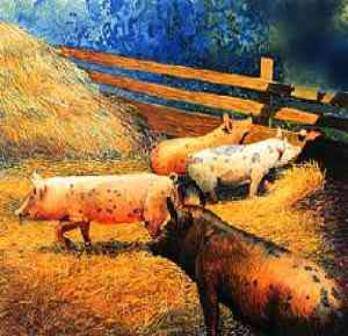
"..it does not require a majority
to prevail, but rather an irate, tireless minority keen to set brush fires in
people's minds.."-- Samuel Adams
"There are a thousand hacking at
the branches of evil to one who is striking at the root." -- Henry David
Thoreau
"When the people fear their
Government, there is tyranny. When the Government fears it's people, there is
liberty.." -- Thomas Paine
Time for a Change?
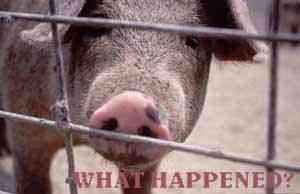
The
price of free corn - The allegory of the pigs - has a serious moral
lesson. This story is about federal money being used to bait, trap and enslave
a once free and independent people. Federal welfare, in its myriad forms, has
reduced individuals to a state of dependency. State and local governments are
also on the fast track to elimination, due to their functions being subverted
by the command and control structures of federal "revenue sharing"
programs. Please copy this Internet page link and send it to all your
state and local elected leaders and other concerned citizens. Tell them:
"Just say NO to federal corn."
Just remember - The bacon you save may be your
own.
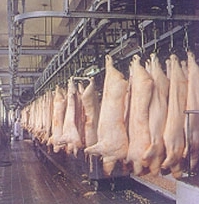



1 comment:
There is just one problem with this story. It never happened and is not very believable either.
The allegory of the cat has a simpler message.
There was once a city boy who moved into the country and rented a small cabin at the edge of a large farm. He would often sit on the back porch and take in the serene calmness of simple country living. One day he saw a stray cat chasing birds and catching mice and thought to himself what a hard and cruel life that cat must have. The city boy rummaged through his pantry and found a can of tuna fish. He opened the can and put some tuna in a bowl which he set out side for the cat. At first the cat stayed away from the bowl but eventually he did eat the tuna fish after city boy went to bed.
Everyday the city boy would put out another bowl of tuna and everyday the cat would eat it. Over time the cat became more friendly and even let the boy pet it. As the boy and cat settled into a daily feeding routine he would often find the cat begging at his door waiting for the tuna. This went on from Spring, to Summer, and into the Fall. Finally Christmas had come and it was Winter now. A few days before Christmas he left the cat extra tuna because he would be traveling back to the city to visit his family and would not be able to feed the cat again for two weeks.
When the city boy returned to his cabin in the countryside he found that the cat had died. The cat was frozen dead on his porch next to the empty bowl he left for the cat two weeks earlier. The cat loyally sat and waited for the tuna that never came. In the days when the boy fed the cat the cat grew lazy and forgot how to catch and eat mice. Even though the boy's intention to help the cat was 100% genuine his kind actions ultimately is what killed the cat.
The moral of the story is don't depend on others for your immediate survival. Dependency is the most cruel of all deceptions.
Post a Comment